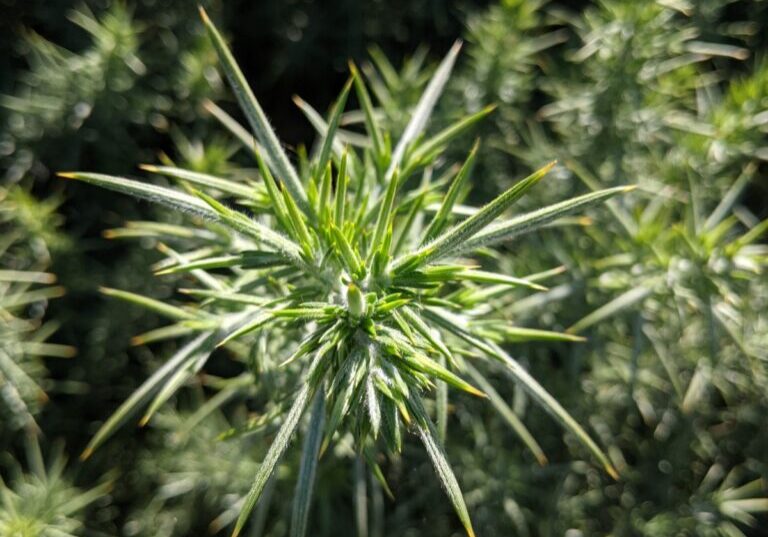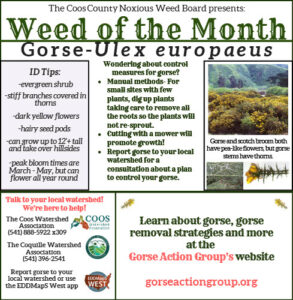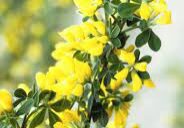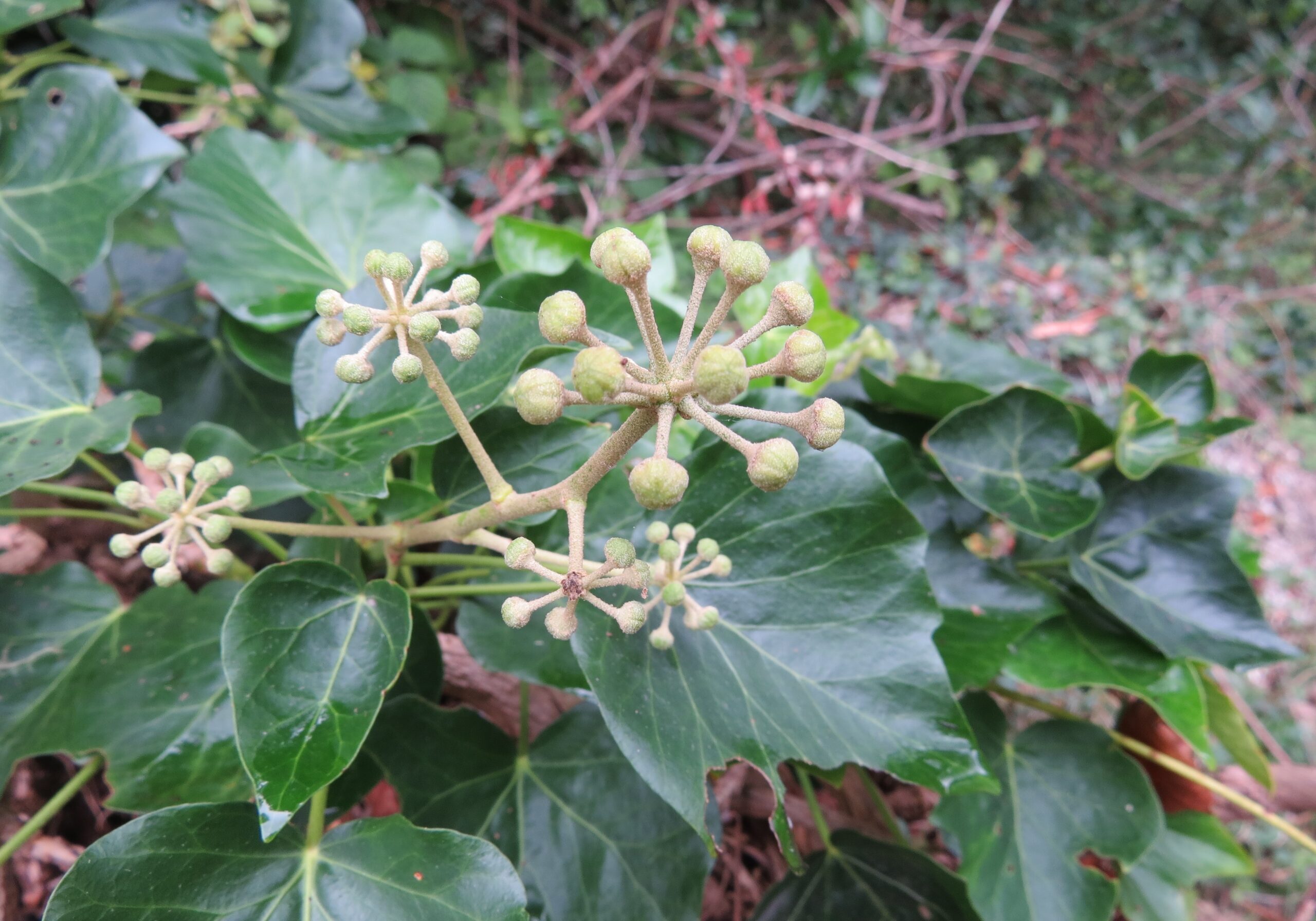
Description
Native to Europe, gorse was introduced to Oregon in the 1890s when European settlers brought it to Bandon as an ornamental/living fence. Settlers also introduced it to 15 other countries and islands, where it has since escaped and caused significant ecological and economic harm. There are few invasive exotic species that are as persistent as gorse, and it is thus considered one of the most difficult weeds to manage in the world. Currently, Oregon has at least 55,000 acres of gorse, primarily along the coast in Coos, Curry, and Lane Counties.
No need to report sightings within its known range (see map below), but definitely report any outside of that!
How to recognize
Gorse is a hard one to miss in the South Coast CWMA area, given its ability to take over coastal bluffs in Bandon. It’s most noticeable during the peak bloom of its pea-like flowers, which turn whole hillsides bright yellow between March and May. However, one does not need flowers to recognize gorse, as it is a large (3-10 feet tall), evergreen, shrub that grows in dense thickets, and is heavily armored with very sharp, long, needle-like leaves. Gorse is sometimes confused with Scotch broom, which shares a similar color pattern but can be touched without causing pain (whereas gorse has an “ouch factor”).
For those interested in learning more about its growth and management options, contact the Gorse Action Group.

What to do if you find it
REPORT
If you find gorse growing outside of its known range (red areas below), REPORT IT ASAP!

Or, contact a noxious weeds professional in your area:
- Coos Bay/North Bend and surrounding areas
Coos Watershed Association: www.cooswatershed.org (contact person pending) - Bandon, Coquille, Powers, Myrtle Point, and surrounding areas
Coquille Watershed Association: imetzgus@coquillewatershed.org - Curry County (New River to Brookings)
Curry Watersheds Partnership: info@currywatersheds.org
REMOVE/MANAGE
There are lots of ways to tackle gorse (listed here), such as herbicides, grazing, controlled burning, mechanical control, biological control, and competitive planting. While the best method may vary from site to site based on size and location of the population, often the best approach is to use a combination of the above (for instance, mechanical, herbicide, and biological control).
The most cost-effective means of control is prevention: clean equipment between sites to eliminate chances of spread, and when you spot new gorse plants on your property, treat them right away to prevent further spread. Be especially vigilant, looking for new plants in February/March when flowering shrubs are most visible.
For more info on managing gorse, please visit the Gorse Action Group website and reach out to the noxious weeds professionals listed above.
REPLACE
Once gorse plants are removed or mowed/mulched, time is of the essence to replant/revegetate the area with a diversity of other plants that can outcompete gorse such as other nitrogen-fixers, legumes, and acid tolerant tall grasses that grow quickly in the mulch and sunlight. Nitrogen-fixers like perennial rye, clovers, lupine, ceanothus and red alders can quickly loosen soils, provide nitrogen, and restore ecological balance that encourages other
vigorously adapted native coastal species like Sitka spruce, willow, twinberry, huckleberry, salal, etc.
For planting ideas and assistance, contact your local watershed council (Coos Watershed Association, Coquille Watershed Association, Curry Watersheds Partnership).
Additional Information
What makes gorse SO very difficult to manage? Its seed bank is especially long-lived, its spines produce oils that make the plants highly flammable, and its roots fix nitrogen so it can thrive in low nutrient soils—just to name a few reasons! It grows quickly, easily crowds out native plants, and takes many years of persistent commitment to control. It does have two biological control agents, though they are not considered an effective control measure.
External links for more info:
https://www.oregon.gov/oda/shared/Documents/Publications/Weeds/GorseProfile.pdf
- All Flower Colors
- Orange & Yellow
- Pink & Purple
- White & Green

















